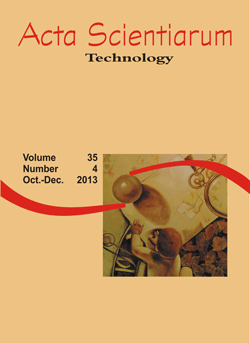<b>A comparative study between MFCC and LSF coefficients in automatic recognition of isolated digits pronounced in Portuguese and English</b> - doi: 10.4025/actascitechnol.v35i4.19825
DOI:
https://doi.org/10.4025/actascitechnol.v35i4.19825Palavras-chave:
spoken digit recognition, mel-frequency cepstrum coefficients, line spectral frequencies.Resumo
Recognition of isolated spoken digits is the core procedure for a large number of applications which rely solely on speech for data exchange, as in telephone-based services, such as dialing, airline reservation, bank transaction and price quotation. Spoken digit recognition is generally a challenging task since the signals last for a short period of time and often some digits are acoustically very similar to other digits. The objective of this paper is to investigate the use of machine learning algorithms for spoken digit recognition and disclose the free availability of a database with digits pronounced in English and Portuguese to the scientific community. Since machine learning algorithms are fully dependent on predictive attributes to build precise classifiers, we believe that the most important task for successfully recognizing spoken digits is feature extraction. In this work, we show that Line Spectral Frequencies (LSF) provide a set of highly predictive coefficients. We evaluated our classifiers in different settings by altering the sampling rate to simulate low quality channels and varying the number of coefficients.
Â
Downloads
Downloads
Publicado
Como Citar
Edição
Seção
Licença
DECLARAÇíO DE ORIGINALIDADE E DIREITOS AUTORAIS
Declaro que o presente artigo é original, não tendo sido submetido í publicação em qualquer outro periódico nacional ou internacional, quer seja em parte ou em sua totalidade.
Os direitos autorais pertencem exclusivamente aos autores. Os direitos de licenciamento utilizados pelo periódico é a licença Creative Commons Attribution 4.0 (CC BY 4.0): são permitidos o compartilhamento (cópia e distribuição do material em qualqer meio ou formato) e adaptação (remix, transformação e criação de material a partir do conteúdo assim licenciado para quaisquer fins, inclusive comerciais.
Recomenda-se a leitura desse link para maiores informações sobre o tema: fornecimento de créditos e referências de forma correta, entre outros detalhes cruciais para uso adequado do material licenciado.















